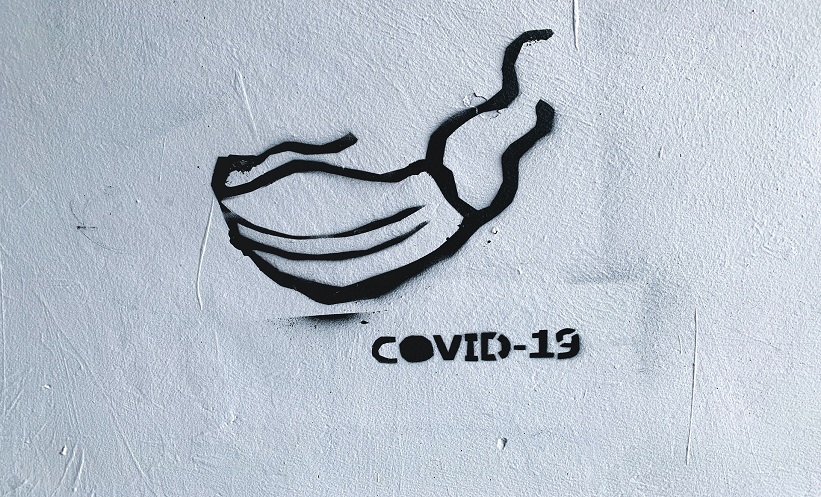M. Akbulut, B. Candemir, *C. Erol
Department of Cardiology, Ankara University School of Medicine, Ankara, Turkey
*Correspondence to [email protected]
Since the announcement of the first severe acute respiratory syndrome coronavirus 2 (SARS-CoV-2) case outside of China on the 13th of January, coronavirus disease (COVID-19) has become a pandemic and an enormous burden for healthcare systems worldwide. Up to 80% of infected individuals remain asymptomatic.1 The symptomatic infection, however, has a wide clinical spectrum, ranging from mild flu-like symptoms to severe pneumonia and acute respiratory distress syndrome. Age and comorbidities are the major determinants for the severity of the infection. Patients with cardiovascular disease and hypertension are at greatest risk for severe infection and mortality.2 The underlying mechanisms for this association are not completely clear. One possible explanation may be that patients with cardiovascular disease tend to be older and have other noncardiac conditions such as diabetes and chronic kidney disease, reflecting a poorer health status. Moreover, the inadequate cardiac reserve in patients with cardiovascular disease may not be amenable to meet the needs of the increased metabolic demands caused by the viral infection. Finally, angiotensin-converting enzyme 2 (ACE2), which facilitates the entry of the viral particle to the host’s cardiac tissues, is abundantly expressed in patients with cardiovascular disease.3-5
Despite the respiratory tract being the most affected system, many other organ systems may be involved in COVID-19, including the cardiovascular system.6 The most frequent cardiac manifestations of COVID-19 infection are acute myocardial injury, arrhythmias, acute pericarditis, heart failure with or without cardiogenic shock, myocarditis, thrombosis, and sudden cardiac death.7
Acute myocardial injury is defined as an increase in high-sensitivity cardiac troponin levels above the 99th percentile upper reference limit, and is the most frequent cardiac manifestation of COVID-19, with a prevalence of nearly 10%.8 It correlates with disease severity, and mortality rates are higher among patients with an elevated high-sensitivity cardiac troponin, even after controlling for other confounding factors.9 The potential aetiologies of acute cardiac injury may be acute coronary syndromes or non-ischaemic conditions such as acute myocarditis, cytokine release syndrome, or stress-induced cardiomyopathy.8
The prevalence of arrhythmias among hospitalised COVID-19 patients is approximately 16% and arrhythmias are far more common among patients in the intensive care unit.8 The type of arrhythmias range from asystole to tachyarrhythmias.10 Sudden cardiac death is not a rare clinical entity in patients with COVID-19 who do not have a prior history of cardiovascular disease. It may be caused by corrected QT interval (QTc) prolongation and transient bradycardia associated with the underlying cytokine storm or the pro-arrhythmic effects of the drugs used in the treatment of the infection such as hydroxychloroquine.11,12
Both arterial and venous thrombosis risk is markedly elevated during COVID-19 infection. Elevated levels of d-dimer and fibrin/fibrinogen degradation products indicate the underlying coagulopathy associated with COVID-19 and portend a poorer prognosis. Immobilisation, active inflamation, and the propensity for disseminated intravascular coagulation also add to the risk of thrombotic events seen in patients with COVID-19.6,8
Finally, there has been a debate ongoing about the use of renin–angiotensin–aldosterone system (RAAS) inhibitors during the COVID-19 pandemic. Some investigators hypothesised that high angiotensin 2 levels caused by the use of RAAS inhibitors may be causative for the severe clinical course. Conversely, others theorised that their use may be beneficial by playing a counteracting role on high angiotensin 2 and the angiotensin 1 receptor.13 However, no certain relationship has been discovered between ACE2 expression and SARS-CoV-2 virulence. Therefore, multiple societies currently recommend continuation of the RAAS inhibitors.8
COVID-19 affects more than just the heart. Psychological fear of attending hospitals because of the risk of catching SARS-CoV2 increases the risk of delayed presentation of heart attacks, pneumonia, and strokes.14,15 This is further compounded by delays in attending to patients because of the need to don personal protective equipment by all healthcare personnel. All patients are affected by this, regardless of COVID-19 presentation.
The awaited vaccine may help solve some of the problems posed by COVID-19. The ‘new normal’ of social distancing, facemask use, and regular handwashing should be part of everyone’s routine in the fight against this deadly virus.
References
1. De Vries AAF. Sars-CoV-2/COVID-19: a primer for cardiologists. Neth Heart J. 2020;15:1-16.
2. Zhou F et al. Clinical course and risk factors for mortality of adult inpatients with COVID-19 in Wuhan, China: a retrospective cohort study. Lancet. 2020;395(10229):1054-62.
3. Newby DE, Rahimi K. Getting to the heart of the matter of COVID-19. Heart. 2020;106(15):1117-8.
4. Sack MN. The enigma of anti-inflammatory therapy for the management of heart failure. Cardiovasc Res. 2020;116:6-8.
5. Zhang H et al. Angiotensin-converting enzyme 2 (ACE2) as a SARS-CoV-2 receptor: molecular mechanisms and potential therapeutic target. Intensive Care Med. 2020;46(4):586-90.
6. Buszewicz G. COVID-19: specific and non-specific clinical manifestations and symptoms: the current state of knowledge. 2020;2019:1-22.
7. Aghagoli G et al. Cardiac involvement in COVID-19 patients: risk factors, predictors, and complications: a review. J Card Surg. 2020;35(6):1302-5.
8. Kang Y et al. Cardiovascular manifestations and treatment considerations in COVID-19. Heart. 2020;2:1132-41.
9. Zheng Y et al. COVID-19 and the cardiovascular system. Nat Rev Cardiol. 2020;17(5):259-60.
10. Wang D et al. Clinical characteristics of 138 hospitalized patients with 2019 novel coronavirus–ınfected pneumonia in Wuhan, China. JAMA. 2020;323(11):1061-9.
11. Shirazi S et al. Sudden cardiac death in COVID-19 patients, a report of three cases. Future Cardiology. 2020;3; DOI: 10.2217/fca-2020-0082.
12. Jankelson L et al. QT prolongation, torsades de pointes, and sudden death with short courses of chloroquine or hydroxychloroquine as used in COVID-19: a systematic review. Heart Rhythm. 2020;17(9):1472-9.
13. Karadag B. Renin–angiotensin system inhibition in COVID-19 patients: friend or foe? Anatol J Cardiol. 2020;24(1):30-1.
14. Schirmer C et al. Delayed presentation of acute ischemic strokes during the COVID-19 crisis. J Neurointerv Surg. 2020;12(7):639-42.
15. Lazzerini M et al. Delayed access or provision of care in Italy resulting from fear of COVID-19. Lancet Child Adolesc Health. 2020;4(5):e10-1.








